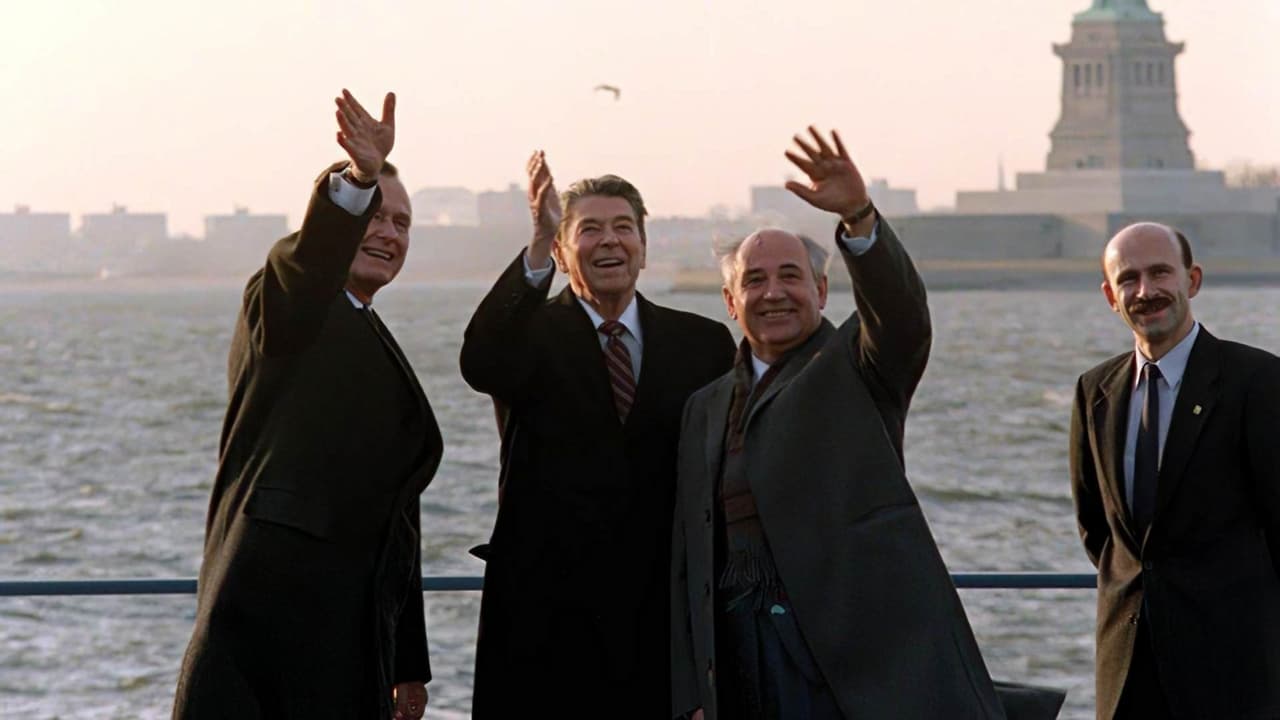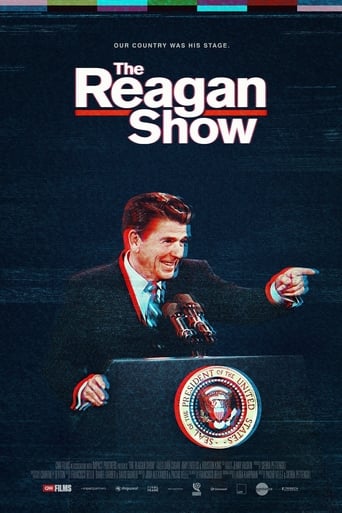

This film is not an in-depth look at the two terms of President Ronald Reagan, but rather focuses on certain elements of his personality which were reflected in how he communicated to the American people and world leaders. There's plenty of archival footage of the time, plus quite a lot of behind-the-scenes quick peeks into how press video releases and speeches were staged.What I found most interesting about the documentary was the eerie comparisons to nearly all the Presidents that have followed, in terms of how they've isolated themselves from answering tough questions from the press or even the public. What you often see in the Reagan era, and continuing to the present day, is a President walking across a White House lawn waving to reporters who are forced to shout questions at him from afar as he boards a waiting helicopter. Even when an occasional press conference is held it all seems scripted and meaningless.When you hear Ronald Reagan declare "let's make America great again", the media criticizing his spending 1 of every 6 days on vacation during his Presidency, and how he's not really that interested in daily briefings and is too detached, these are all things we certainly hear today. Unfortunately, I don't see an easy answer on the horizon as to how to reverse the Presidency from remaining a "show". It will take some new radical concepts , I believe, and some very strong and remarkable leadership to change the current detachment of government and gridlock we have now.
... View MoreRonald Reagan was the movie actor who became President of the United States. He was no towering intellectual genius, and may already have been dispalying symptoms of demintia while in office, but he knew how to act the part, and was broadly popular preciesly because he conformed to many Americans' expectations of how their leader should behave. This film, assembled from White House tapes, really does illustrate how Reagan did his job: not as a man-manager, or master of intricate policy papers, Reagan simply learnt (and spoke) his lines. What's most interesting is the bipartisan respect with which Reagan was treated - certainly a thing of the past, although perhaps a specific product of Reagan's unqiue appeal. The problem with the documentary is that it goes easy on it's subject: the Iran-Contra scandal is glossed over, Reagan's racist dogwhistles aren't even mentioned, while the arms reduction treaty he signed with Gorbachev is eulogised (although the Russian leader had his own reasons for wanting a deal, regardless of who was in charge in the U.S.). Reagan was certainly more genial than Trump; but both men can be seen as part of a movement in Republican politics towards racism, and anti-intellectualism, that still imperils the world. By all means watch this film; but if you don't know much about St. Ronald, find a more critical source as well.
... View MoreMade up entirely of archival news and White House footage, this documentary captures the pageantry, absurdity, and mastery of the made-for-TV politics of Ronald Reagan.It's a hit job. Right from Frame One you know where this crapola is going to go.It so sad what has happened in this country. How the left can't get along with anyone except the koolaid drinkers.Don't watch this garbage. It's not worth your time.Donesn't matter if you are left or right. The media cannot be trusted.
... View MoreGreetings again from the darkness. More film footage exists of Ronald Reagan's eight years as President than the previous five administrations combined. Under the guise of pulling back the curtain on how this was orchestrated by the actor-turned-politician, co-directors Sierra Pettengill and Pancho Velez instead seem more focused on delivering a hatchet job on the 40th U.S. President known as "the Great Communicator".With the exception of a few talking heads (Tom Brokaw, Walter Mondale, Peter Jennings, Sam Donaldson, etc), the film exists almost entirely of archival video and film footage from Reagan's time in office. It kicks off on December 21, 1988 as Reagan and film crew prepares for his final interview with David Brinkley. The closing sequence shows Reagan's final day in the White House as he leaves the Oval Office for the last time and how it was choreographed for the cameras.Two things are quite evident in showing what the filmmakers were after: an emphasis on the Cold War and the PR battles between Reagan and Mikhail Gorbachev, and the parallels and comparisons to the current U.S. President though Donald Trump is never mentioned. Gorbachev was the only politician up to that time who could match, or even eclipse, Reagan's comprehension of the value in controlling the public relations (as opposed to media relations). As a precursor to the Reality TV era, the 1988 Moscow Summit even featured TV shirts made in the United States! The Trump comparisons seem endless and lightly-veiled as we see Reagan manipulate and clash with the media, while also strategically evading when necessary. With a slew of Democrats, journalists, and broadcasters casting aspersions and doubt on Reagan's competency and commitment, there is even the accusation that he depended on his staff too heavily. This stands in stark contrast to what these days is reported on Trump – someone who doesn't depend enough on staff and advisers. We can't help but take note of how it's always the media and opposing party making these determinations and judgments.Additional pot shots occur around the Iran 'arms for hostages' scandal, and it comes across as if the filmmakers think the close relationship between Ron and Nancy ("I thought I married an actor") somehow proves their point that he was disengaged as President. That's right, the point of the documentary has little to do with how Reagan played to the camera (which is the premise being sold), but rather how they judge him to be style over substance. The footage utilized is excellent and the film is well structured, but most documentary viewers would prefer the filmmakers be upfront about their mission. Own it.
... View More